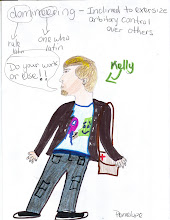“You
know those old Westerns where the cowboys make a run for the border? This is my
Mexico.”
Let’s
get continuity out of the way. It’s quite simple, but seems to baffle a lot of
people—I actually just think they’re baffled that F&F can have a continuity. Anyway, the events The Fast and the Furious: Tokyo Drift take
place after the next three movies. How do we know? Because Han Seoul-Oh does
not survive the events of TD, and
appears in the next three movies, culminating in the reveal of the true nature
of his death at the end of Fast &
Furious 6. Ergo, TD follows those
other three movies. It isn’t rocket science.
Knowing that TD was nearly this strange off-shoot—or, dare I say, The Fast and the Furious Gaiden—I
skipped it at first. After all, this one lacked pretty much everyone and had
Bow Wow in their place? But skipping TD is
a huge mistake.
TD
is the first turn at the wheel for director Justin Lin, who I think it is
fair to credit with creating the series as it is known and loved today. Accordingly,
TD is just plain well crafted—sleek,
energetic, kinetic, weighty, and minimally adorned with CG. Helping in that
last regard is that the concept of drifting naturally makes for an exciting
visual, rendering the experimental embellishments like the anime speed lines
and the tour of engine interiors that overwhelmed 2F2F moot. There’s gravity, crashes crunch and drivers exhibit an
intense focus.
But TD remains a strange beast, the least blockbusterish of the series.
The points of comparison here are not Point
Break or 70’s kung fu, but, as drawn by no less a figure than Roger Ebert, Lost in Translation, focused on
character. Sure, it’s not as ruminative—obviously young ScarJo didn’t have to
flee angry yakuza—but it’s no less keenly observed. It opens with a lengthy
montage of our hero Sean’s day, awash in high school angst, frustration, and
absurdity. We don’t have to wait long for some racing action, but it’s a race
full of telling character details. Mainly, Sean’s kind of a garbage driver,
reckless and barely in control, his primary strength being a bit of cleverness
coupled with a disregard for mortality and a little bit of fair play. Then he’s
off to Tokyo, where he has to learn about its culture and ways to get by.
There is always a danger in these
sorts of stories of falling into exocticism (and in this case orientalism specifically)
and a trope that goes by many flippant names, but I prefer Great White Man. You
know the story—a white guy, disquiet haunting his soul, comes into contact with
a (usually less developed) culture, adopts the strange mystical traditions of
its people which he soon masters and becomes their greatest warrior. Obviously,
there are unavoidable elements of this in TD,
but they take such a backseat to Sean becoming enculturated to his new home, a
process which he seems open and receptive to. And the movie helpfully avoids
the very obvious jokes and trope markers—Sean seems to take pretty quickly to
the food, and Han tells him “there is no ‘wax on wax off’ to drifting.”
Most of our big blockbuster movies
these days are little c conservative if not Conservative—they’re all invaders
posing existential threats to Our Way of Life, and the brave few who do what is
necessary no matter what the Brass has to say about it, so on, so forth, this
attack eerily reminiscent of 9/11 needs to be stopped. Granted, the invaders
are usually alien robots or the like, but still. There remains an “us v. them”
aura, and Them are foreigners, even foreign hive-mind alien robots. F&F feels different, though. One
comedian noted with amusement that no matter where they are, the crew is able
to find the “group of douchebags under a bridge” racing. Amusing, but also true
and significant. LA, Miami, Tokyo, and points beyond the series would visit
later, they all have racing douchebags under bridges, and as different the ways
of those douchebags may be, the crew can find kinship there. After all, don’t
we all love a kick-ass car chase?
TD
does take at least a little time for a little rumination, as we also get an
elegiac scene of a line of cars drifting and dancing their way down a mountain,
under the moonlight and flanked by trees. Liberation and elevation through
nature and machinery, yeah, I’m going there, the sequence is, dare I say,
Miyazaki-esque.
And what of the elegy of Han? What
of his mournful cool, the funerary philosophical authority with which he
carries himself, the loss that animates both his connections and his
indifference? There’s probably a story there.
I Laughed: The
last minute need to dodge the plummeting carcass of Takeshi’s car—a prelude of
the kind of insanity that was to come.
Soundtrack Lowlight: BAWMDIDDYBAWMDIBANGDIBANGJIPPYJIPPYJIPPYSHURAJOMDABOOGIE!
That’s right, there can be only one choice here, and that choice is named
Kiiiiiiiiiiiiiiiiiiiid Rock.


No comments:
Post a Comment